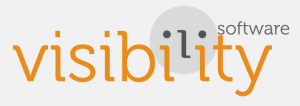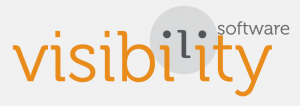
In the quest for business success, organizations today recognize the paramount importance of implementing and maximizing the value of a Talent Acquisition Plan. It is no longer enough to merely have a workforce; organizations must strategically identify, attract, and retain exceptional talent that aligns with their mission and goals. In this thought-provoking blog post, we explore the key components of a talent acquisition plan, why it is crucial, and how to effectively implement and optimize it for long-term success.
What is a Talent Acquisition Plan?
A talent acquisition plan is a comprehensive strategy and framework designed to attract, assess, select, and onboard high-quality candidates who possess the essential skills, qualifications, and cultural fit for an organization. It goes beyond mere recruitment and embraces a proactive and systematic approach to talent management.
Importance of a Talent Acquisition Plan:
- Strategic Alignment: A well-crafted talent acquisition plan ensures that your organization’s talent needs align with its overall strategic goals. It serves as a blueprint for identifying the roles and competencies required to drive growth, innovation, and future success.
- Competitive Advantage: In a hyper-competitive job market, the ability to attract and secure top talent gives organizations a distinct advantage. A talent acquisition plan helps distinguish your organization as an employer of choice, fostering a positive employer brand and attracting high-performing individuals.
- Cost Efficiency: Strategic talent acquisition can result in significant cost savings by reducing employee turnover and minimizing the need for frequent recruitment efforts. Companies that invest in attracting and selecting the right candidates the first time around can avoid the financial burden associated with poor hires.
- Culture and Performance Enhancement: A talent acquisition plan aims to identify candidates who not only possess the right skills and experience but also align with the organization’s values and culture. A culturally diverse and inclusive workforce can lead to improved collaboration, innovation, and overall performance within the organization.
The importance of a Talent Acquisition Plan is supported by various statistics that highlight its value in today’s competitive job market.
- According to a study, 67% of HR leaders believe that their talent acquisition strategy is essential for their organization’s success.
- A report reveals that companies with a formal talent acquisition strategy are more likely to outperform their competitors.
- Companies with a well-defined talent acquisition strategy are 28% more likely to have improved quality of hire.
Implementing a Talent Acquisition Plan:
- Needs Analysis: Clearly define the talent requirements for each role by conducting a thorough analysis of your organization’s current and future talent needs. This includes understanding the skills, knowledge, and competencies needed to achieve strategic objectives.
- Employer Branding: Develop a compelling employer brand that highlights your organization’s unique culture, values, and opportunities for growth. Utilize various channels, such as social media, website content, and employee testimonials, to effectively showcase your employer brand and attract top talent.
- Sourcing and Recruiting: Implement a multi-faceted sourcing strategy to engage with a broad talent pool. Leverage online job boards, professional networks, employee referrals, and partnerships with educational institutions to identify and attract the best-fit talent.
- Selection and Assessment: Design a rigorous selection and assessment process that goes beyond traditional interviews. Utilize tools such as skill assessments, behavioral interviews, and hiring assessments to evaluate candidates’ suitability for the role and cultural alignment with the organization.
- Onboarding and Integration: Ensure a seamless onboarding process that familiarizes new hires with the organization’s culture, policies, and expectations. A well-designed onboarding program sets employees up for success, enhances engagement, and facilitates quicker integration into the company.
- Continuous Evaluation and Improvement: Continually measure the effectiveness of your talent acquisition plan through key performance indicators (KPIs) such as time-to-fill, quality of hires, and retention rates. Analyze data and feedback to identify areas of improvement and refine your talent acquisition strategy.
Conclusion:
Implementing a robust talent acquisition plan is instrumental in shaping an organization’s success and staying ahead in a competitive business landscape. By strategically aligning talent needs, attracting top talent through effective employer branding and sourcing techniques, implementing a thorough selection process, and providing a seamless onboarding experience, organizations can maximize the value of their talent acquisition efforts. With a well-executed talent acquisition plan, organizations can create a workforce that drives innovation, growth, and overall success.
Need assistance enhancing or developing your talent acquisition plan? We can help!
Schedule your free Talent Success meeting today. During this meeting, we will review your talent plan, goals, processes, and challenges and provide you with top best practices to implement now.

